This site uses affiliate links, meaning that if you make a purchase through our links, we may earn an affiliate commission.
Of all the places that I visited in Nara, I was most impressed with Kausga Taisha Shrine. The shrine and the surrounding grounds are stunning! Here is how to visit Kasuga Taisha Shrine in Nara and what to see.
If you are planning a trip to Nara, then make sure to check out Perfect One Day in Nara (6 Things You Can’t Miss).
- 1. How to Get to Nara from Kyoto or Osaka
- 2. How to Get to Kasuga Taisha Shrine in Nara
- 3. What to See at Kasuga Taisha Shrine in Nara
-
- 3.1. Walk Along the Path of 3,000 Lanterns
- 3.2. Explore Kasuga Taisha Shrine
- 3.3. Visit Fujinami-no-ya Hall
- 3.4. Attend Setsubun Mantoro or Obon Mantoro Festival
- 3.5. See Famous Kasuga Taisha Shrine Wisteria
- 3.6. Visit Kasuga Taisha Shrine Manyo Botanical Garden
- 3.7. Make Sure to Buy O-mikuji Fortune
How to Get to Nara from Kyoto or Osaka
Nara is a perfect destination on a day trip from Kyoto, and, there is nothing easier than to plan a day trip to Nara from Kyoto. You can do it! Here is how to get to Nara from Kyoto on a day trip: what you need to know is that there are two train lines that connect Kyoto with Nara, the JR Nara Line, and the Kintetsu Kyoto Line.
- JR Nara Line
If you have JR Pass, then you would want to take JR Nara Line. The cost of the trip will be covered by the pass. So, to start off, head to Kyoto Station and take the Miyakoji Rapid Train on the JR Nara Line. Miyakoji Rapid Train is the fastest connection between Kyoto and Nara. It only takes 45 minutes to reach JR Nara Station from Kyoto, if you take the rapid train.
I need to mention that there is Futsu local train which is covered by JR Pass as well, however, it stops by several stations on the way to Nara and the journey takes about 70 minutes.
- Kintetsu Kyoto Line
Kintetsu Kyoto Line is not covered by JR Pass, however, it is the fastest and most comfortable way to get to Nara. First of all, go to Kintetsu Kyoto Station and take the direct express (tokkyu) train on Kintetsu Kyoto Line. You will get to Kintetsu Nara Station in only 35 minutes.
By the way, JR Nara Station and Kintetsu Nara Station are within walking distance of each other and both stations are about the same distance from all the attractions.
If you are visiting Osaka, then, hands down, you should plan a day trip from Osaka to Nara. There are two train lines connecting Osaka with Nara: the JR Yamatoji Line, and the Kintetsu Nara Line.
- JR Yamatoji Line
JR Yamatoji Line is covered by Japan Rail Pass. If you have the pass, then your trip to Nara is covered. First, head to Osaka Station and take the JR Yamatoji Rapid Service. It will get you to JR Nara Station in 50 minutes.
In addition, if you are traveling from Osaka JR Namba Station, then take the local train of the Yamatoji Line to Kyuhoji Station and then transfer to the Yamatoji Rapid Service. This will get you to JR Nara Station in about 50 minutes as well.
- Kintetsu Nara Line
Kintetsu Nara Line is not covered by JR Pass. If you decide to take Kintetsu Nara Line, then head to Osaka Kintetsu Namba Station and take a Rapid Express train on the Kintetsu Nara Line. It will get you to Kintetsu Nara Station in about 39 minutes.
How to Get to Kasuga Taisha Shrine in Nara
Kasuga Taisha Shrine is located in the southeast section of Nara Park in Nara.
If you are arriving at Kintetsu Nara Station, then it is about a 20-minute walk to reach the shrine. Likewise, if you arrive at JR Nara Station, then it is no more than a 30-minute walk to Kasuga Taisha Shrine.
What to See at Kasuga Taisha Shrine in Nara
Walk Along the Path of 3,000 Lanterns
The path leading to Kasuga Taisha Shrine is lined with thousands of aged, moss-covered stone lanterns.
They are known as “toro” and have been donated by worshipers as an expression of their faith.
And, as you walk, be on the lookout for the deer peeking in between the lanterns.
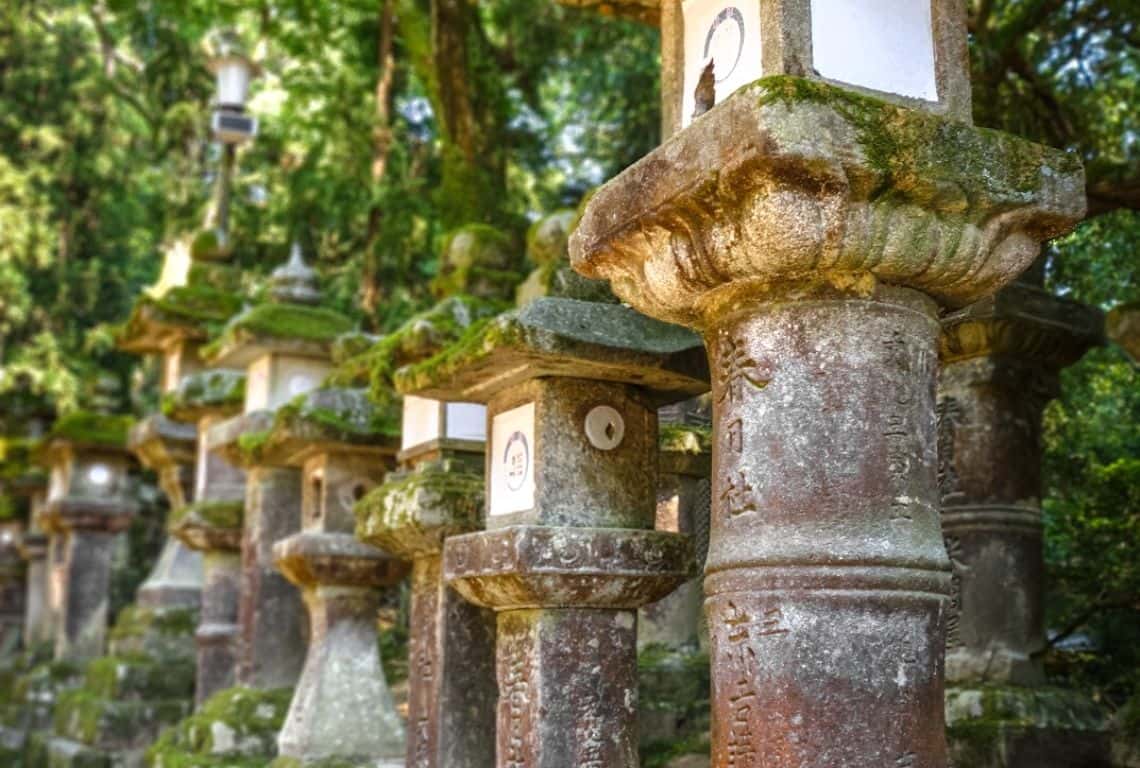
Kasuga Taisha Shrine in Nara
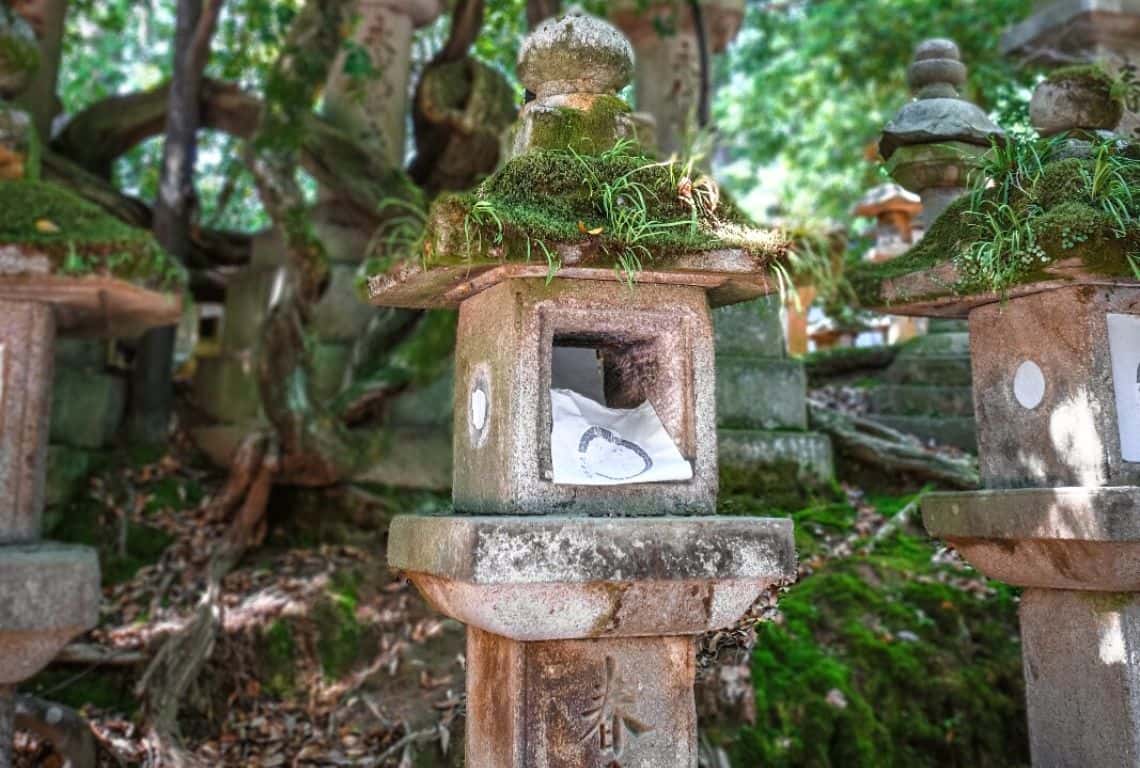
Kasuga Taisha Shrine in Nara
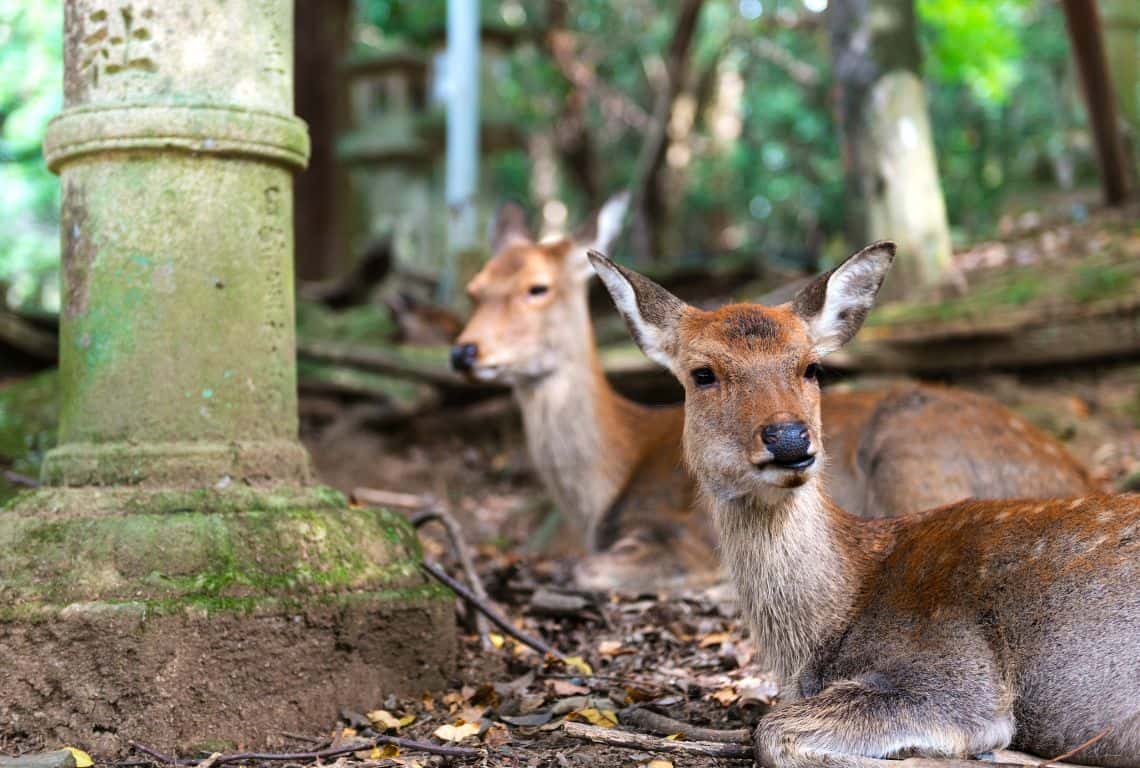
Kasuga Taisha Shrine in Nara
Explore Kasuga Taisha Shrine
Kasuga Taisha Shrine is considered one of the most cherished shrines in Nara. It is designated as one of the Three Great Shrines in entire Japan.
When you enter the main area of the shrine, you will be immediately struck by the multitude of vermilion columns of the shrine buildings. They stand out beautifully against the contrasting white walls and roofs of the shrine which are made out of cedar bark.
Next, you will notice that the eves of the shrine are decorated with thousands of hanging brass and bronze lanterns; some new and brightly polished, some old and tarnished by time.
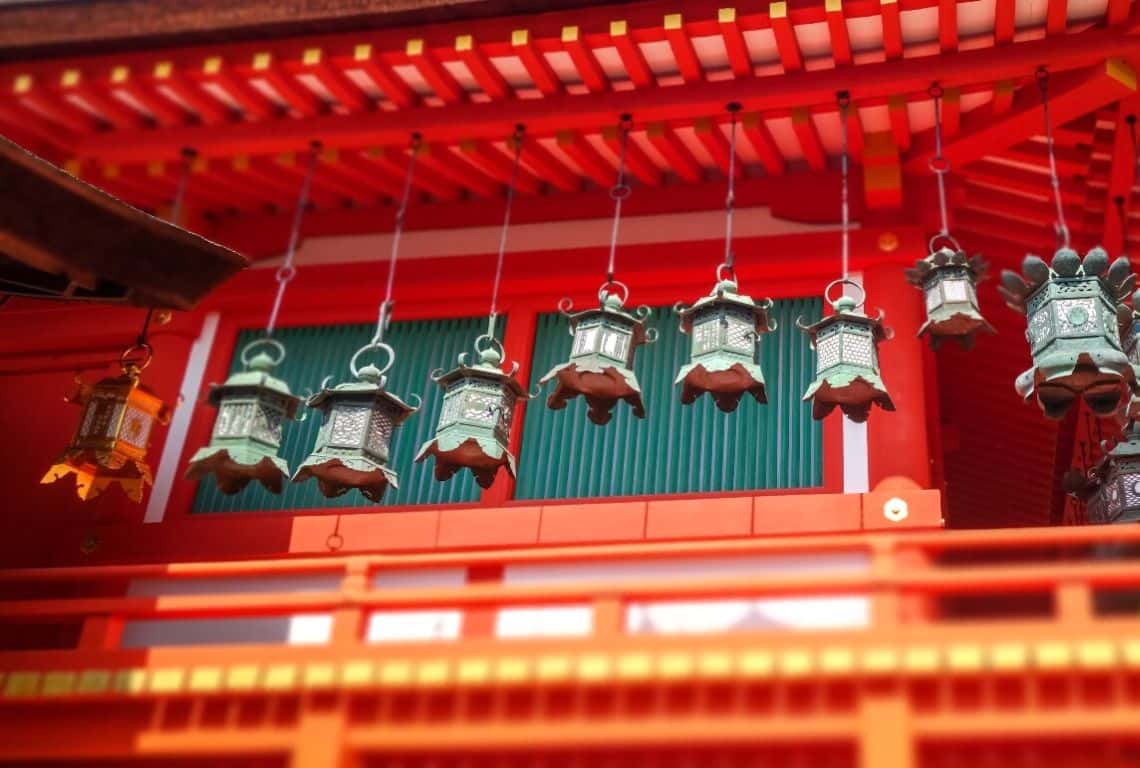
Kasuga Taisha Shrine in Nara
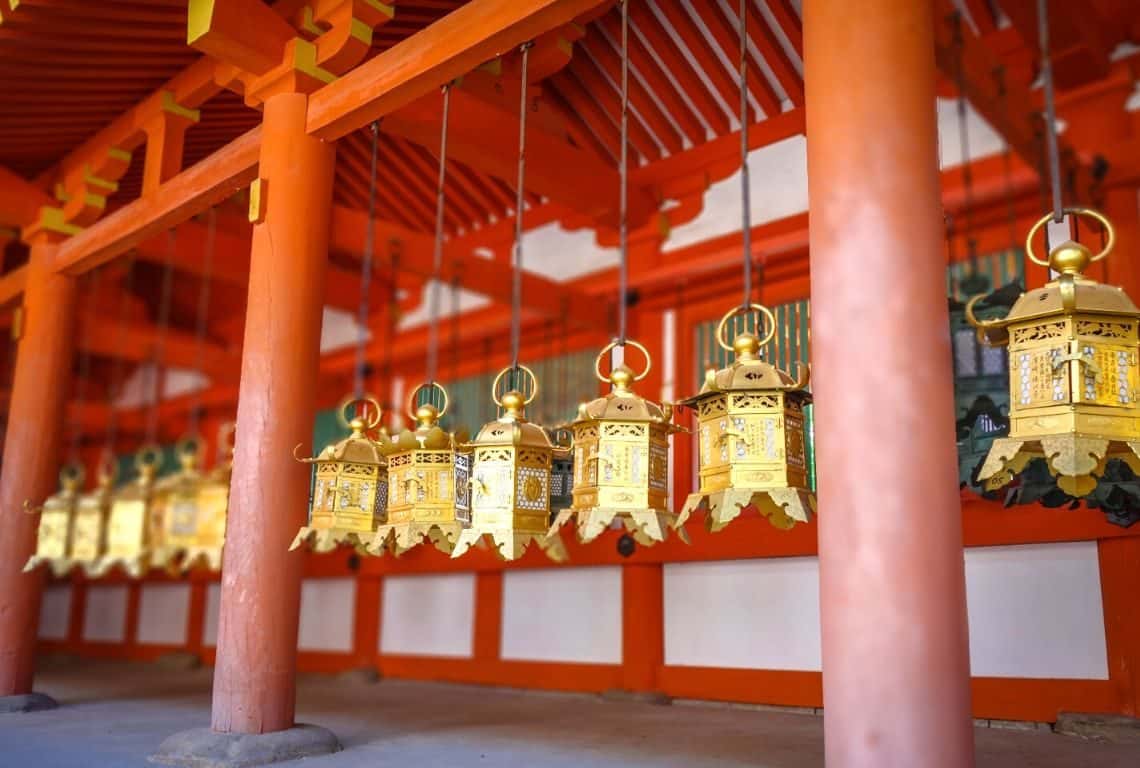
Kasuga Taisha Shrine in Nara
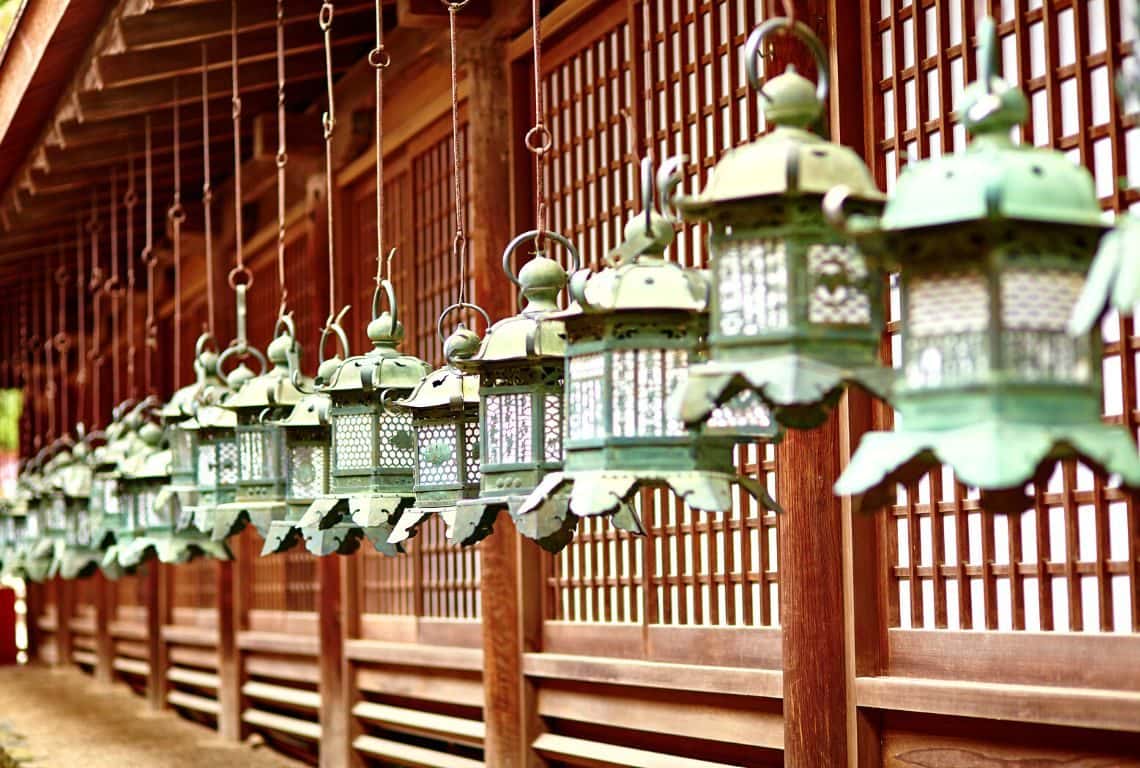
Kasuga Taisha Shrine in Nara
Like the Kōfuku-ji Temple, the Kasuga Shrine was commissioned by the Fujiwara family, which was one of the most powerful families during the ancient period. Notably, the Fujiwara family dominated Japanese politics until the 11th century.
When the shrine was officially finished in 768, it became the worship place of not only the Fujiwara family but, also, the entire Imperial Court. According to Shinto concepts of purity, Kasuga Taisha Shrine in Nara was torn down and rebuilt every 20 years in its original form until 1863.
There are four main deities enshrined at Kasuga Taisha Shrine:Takemikazuchi-no-mikoto, Futsunushi-no-mikoto, Amenokoyane-no-mikoto, and his consort Himegami. These four deities are also known as Kasuga-sume-ookami or Kasuga-Daimyojin (the Great Deities of Kasuga).
Kasuga Taisha Shrine was designated a UNESCO World Heritage Site in 1998.
Kasuga Taisha Shrine is open all year-round from 6:00 am to 6:00 pm from April to September, and 6:30 am to 5:30 pm the rest of the year. The entrance to the outer compound is free, however, if you want to tour the shrine’s inner grounds, then there is an entrance fee of 500 yen.
Visit Fujinami-no-ya Hall
Don’t miss Fujinami-no-ya Hall! It is a hall located in the inner section of Kasuga Taisha Shrine. Specifically, it stands directly behind the main shrine in the North cloister.
Fujinami-no-ya hall has an astounding collection of brass and bronze lanterns. Notwithstanding, this is one place where all the lanterns remain lit continuously.
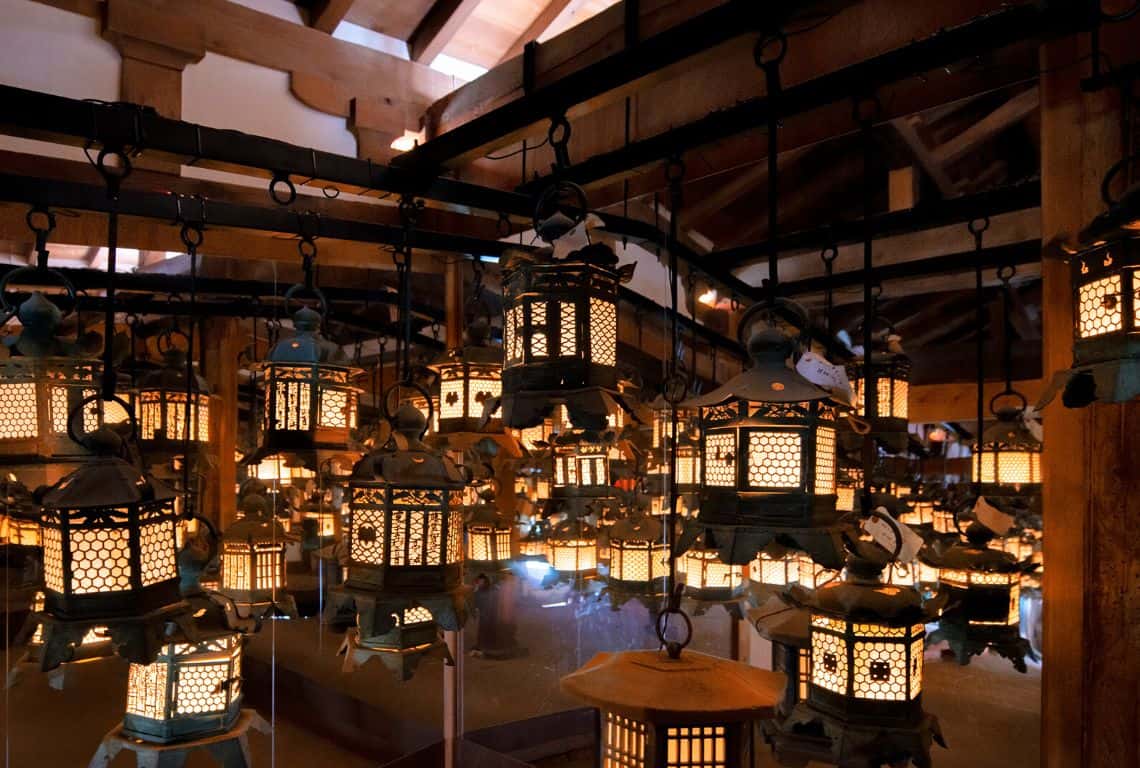
Kasuga Taisha Shrine in Nara
Attend Setsubun Mantoro or Obon Mantoro Festival
The most spectacular time to visit Kasuga Taisha is when all 3,000 of the shrine’s lanterns are lit at once.
This happens only a few days each year, during the two festivals:
- Setsubun Mantoro Festival, which happens from February 2nd through February 4th
- Obon Mantoro Festival, scheduled from August 14th through August 15th
Kasuga Taisha Shrine in Nara
See Famous Kasuga Taisha Shrine Wisteria
Kasuga Taisha Shrine in Nara comes to life every spring, specifically, in early May, when more than 200 wisteria trees are in full bloom.
Notably, the wisteria flower is the motif of the family crest of the Fujiwara family. “Fujiwara” can be translated as “field of wisteria.”
Some of the wisteria trees, located all around the shrine, are hundreds of years old.
However, the most spectacular wisteria tree is located right in the middle court. It is said, that it is at least 800 years old. It is known as Sunazuri no Fuji and when it is in full bloom, then its flowers grow so long that they nearly touch the ground.
Kasuga Taisha Shrine in Nara
Visit Kasuga Taisha Shrine Manyo Botanical Garden
Kasuga Taisha Shrine Manyo Botanical Garden is the best place to see the wisteria flowers in their glory. The garden has about 200 wisterias in colors ranging from white, cream, pink, dark red, lilac, and deep purple.
Apart from wisteria, there are over 250 species of plants in the garden as well and it is worth the visit at any time of the year.
The Botanical Garden is open from 9:00 am to 5:00 pm (until 4:30 pm from December to February). It is closed on Mondays from December to February. The entrance fee is 500 yen.
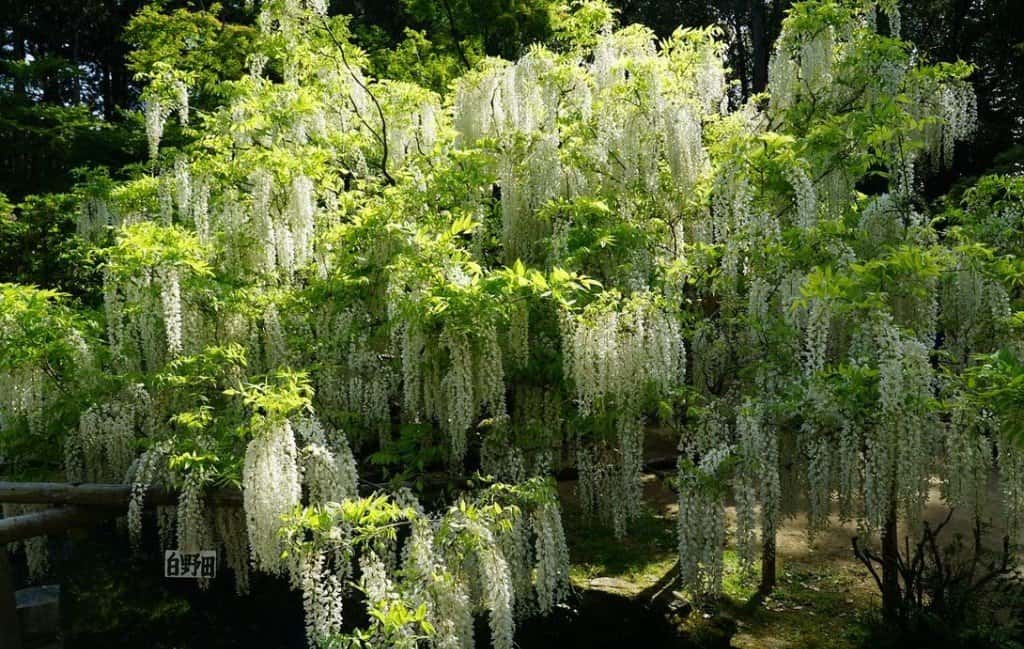
Kasuga Taisha Shrine in Nara
Make Sure to Buy O-mikuji Fortune
O-mikuji are random fortunes written on small strips of paper at Shinto shrines and Buddhist temples in Japan.
O-mikuji literally means “sacred lot”.
When the prediction is an unfavorable one, it is a custom to fold up the strip of paper and attach it to a pine tree. The Japanese word for pine tree is ‘matsu’.
However, the Japanese verb ‘to wait’ is also ‘matsu’. So the idea is that the bad luck will wait by the pine tree, rather than, follow the fortune seeker. Now, if the pine tree is not available, then any wall of metal wires will suffice as well.
If the fortune is a good one, then the fortune seeker can tie it to the tree or wires so that the fortune has greater power, or he or she can keep it for good luck.
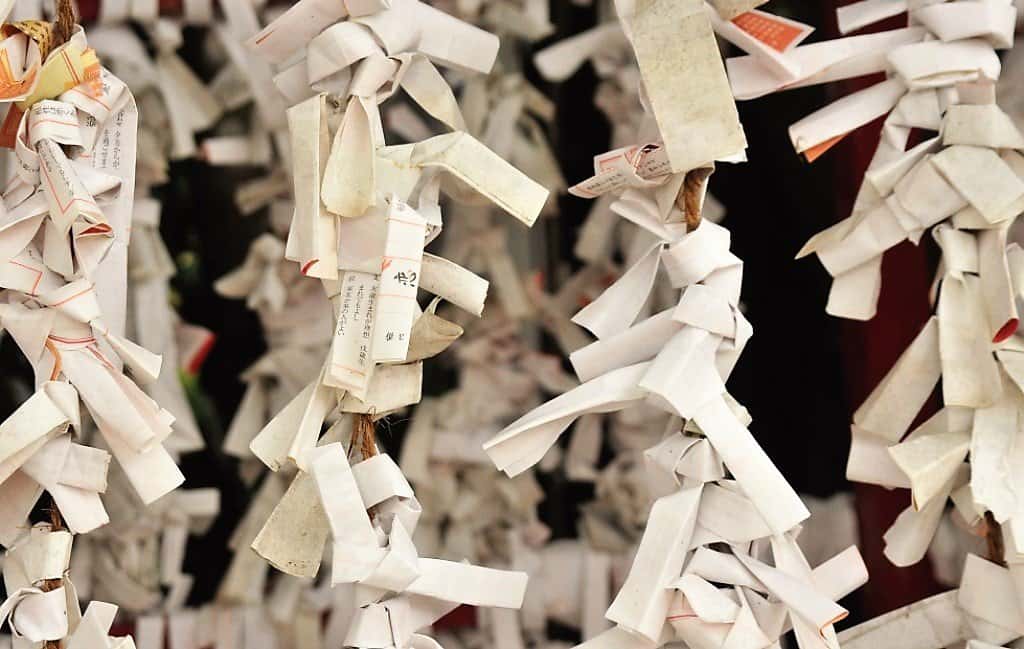
Kasuga Taisha Shrine in Nara
More Information About Kyoto and Other Stunning Places in Japan:
14 Amazing Things to Do in Arashiyama (Map+Useful Tips)
What to See at Nijo Castle in Kyoto (10 Top Things to Know)
Stunning Golden Pavilion in Kyoto (How to Visit and What to See)
Amazing Fushimi Inari Taisha in Kyoto (8 Things to Know Before You Visit)
First Visit to Kyoto – How to Visit and What to See (11 Things You Can’t Miss)
Perfect Day Trip to Miyajima from Kyoto, Osaka, or Hiroshima
Now, It Is Your Turn, I Would Like to Hear Back from You!
Are you planning your trip to Nara? Is Kasuga Taisha Shrine on your list of places to visit?
Please let me know! Drop me a quick comment right below!
Click on any of the images below to get inspired and to help you with the planning process for your trip to Japan!
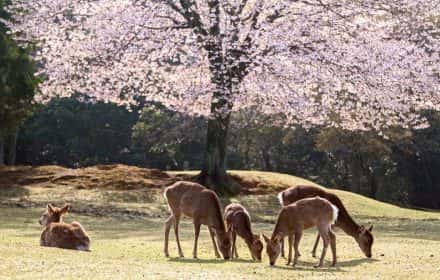
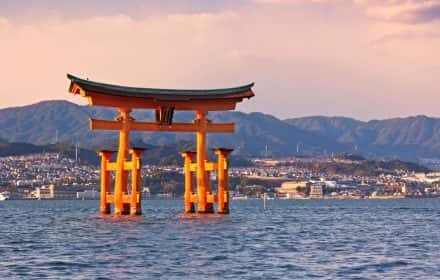
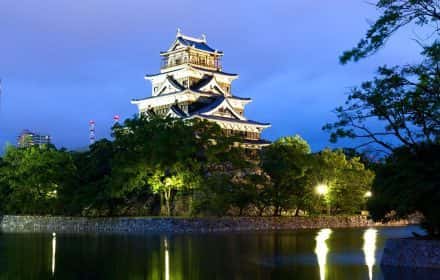
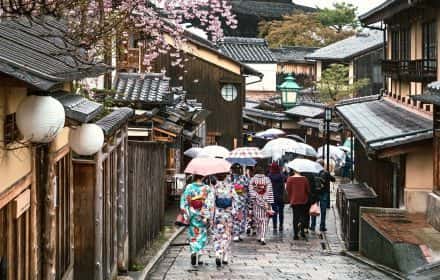
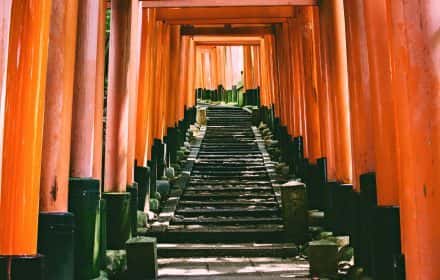
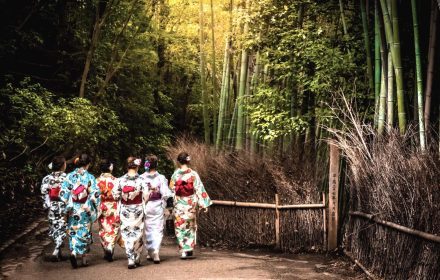
Comments:
8 thoughts on “Stunning KASUGA TAISHA SHRINE in NARA (7 Best Things to See)”
Wow, the 3, 000 lit lantern during the festival is interesting and enticing to see and witnessed it in person. The flowers of the Mayo Garden is beautiful! I love the lovely white shades! Thanks for sharing.
Hi April!
Thank you for your comment!
Okay Ana, you just blew my mind! I lived in Nara for a few years and visited Kasuga Taisha countless times, I *really* love it at all times of year. It was even on my main jogging route!
However, somehow I never knew about Kasuga Taisha Shrine’s Manyo Botanical Garden! Now I feel like I have to go back – I already love the wisteria within the shrine, but that garden looks stunning!
Hey Josy!
I feel the same way reading your posts. You always have that insider knowledge. I think that is what adds the value to the post… these little unknown, precious pieces of information that readers can find useful.
I love the architecture of this temple and the deers are so cute. Really cool place that seems to be away from the touristy hustle bustle.
Thank you for your comment!
Kasuga Taisha Shrine,, a UNESCO World Heritage Site, is so lovely, especially the hanging brass and lamps and the wisteria.
Thank you, Carol!